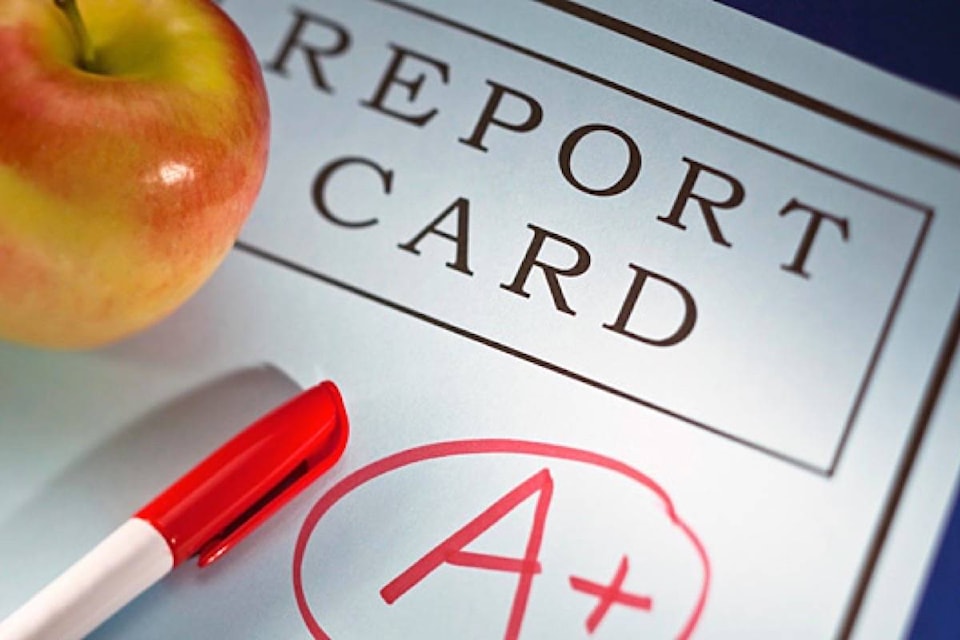Elementary school students in North Okanagan-Shuswap School District #83 will be seeing changes in how their school performance is reported after a successful pilot project over the past year yielded good results.
The new report cards, introduced in several elementary schools for the 2017-18 school year, will now be the official format for all elementary schools in the district after a recommendation by assistant superintendent Carl Cooper at the Sept. 25 board of education meeting.
In addition to new report cards, a new process for goal-setting for student-parent-teacher conferences will be introduced.
Related: 16 of 20 fastest improving B.C. schools are public schools
According to a report published by the district, these changes come as a result of both students and teachers identifying a disconnect between how progress is reported in the classroom versus how it looks in a formal report card. A committee was formed including teachers from across the district to work with Pat Horstead, who assists the ministry of education in the areas of classroom assessment and reporting of student learning.
The new reporting format prioritizes clear communication, year-to-year progress tracking, and reporting on effort and work habits in addition to academic performance. There is a shift away from letter grades and towards more qualitative assessments and descriptions of student performance, such as what can be improved and what is being done well, as opposed to a percentage or letter grade.
In the new report card example provided by the district, performance in classes is measured in terms of meeting expectations for their grade level, from a score of one for students who require ongoing support to meet grade-level expectations to a score of four indicating a student exceeds expectations for their grade and takes initiative to further their learning.
Students are also evaluated on their work habits and social development such as their group working skills, sense of responsibility for their own work and participation in school events or class discussions.
In terms of communicating student learning to both students and parents, the district is aiming to shift away from ‘episodic’ reporting and toward more timely feedback as students make progress rather than only at set times in the term. This aims to inform students and parents what has been accomplished and the next steps in the learning process.
Related: Protesters argue both sides of B.C.’s SOGI curriculum
Surveys of both parents and staff were completed to get feedback on the report card template and conference format, and Cooper noted that more than 80 per cent of the feedback was positive.
“A lot of hard work has gone into this,” commented official trustee Mike McKay when approving the new format. “I’m really encouraged by the results. When something new garners in excess of 80 per cent approval in its first year that is pretty good. I anticipate with the fine-tuning that has happened this will be even higher.”
While much of the feedback is indeed positive, the report includes a collection of anonymous comments from parents on the new reporting methods which show opposition to the dismissal of more traditional letter grades. There are also several comments from parents regarding evaluations about their children’s progress, both positive and negative.
While parent comments indicated they appreciate reporting that is more descriptive and personalized for their child, they also said it is sometimes inconsistent or vague as compared to a letter grade which is perceived as a clear indication of performance.
